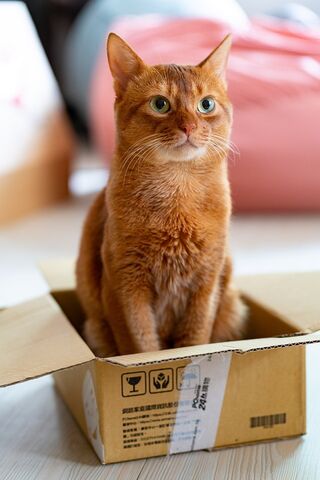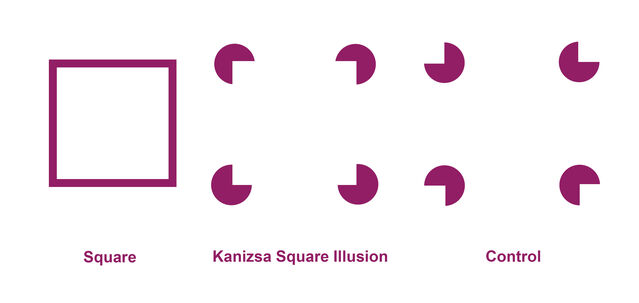Stress
How Visual Illusions Affect Where Cats Choose to Sit
Researchers compared cats’ preferences for sitting within different stimuli.
Posted June 26, 2022 Reviewed by Gary Drevitch
Key points
- Cats like to sit where they fit; however, research has focused on 3D enclosures.
- Through a “citizen science” experiment, researchers examined cats’ preferences for sitting in 2D stimuli, including an illusion of a square.
- Cats are susceptible to certain visual illusions, but we still don't know why they like to sit within 2D shapes which don't offer protection.

Cats are known for doing adorable things like sitting in tiny spaces. It is thought that small enclosures help cats feel safe. Indeed, new cats in shelters were less stressed when they were provided with boxes to hide in. However, cats’ love for sitting where they fit does not seem to be limited to 3D enclosures; cats also appear to be drawn to certain 2D shapes. Smith et al. (2021) investigated cats’ preferences for box-like shapes in a “citizen science” experiment through which cats were exposed to different stimuli at home. They hypothesized that cats would not only prefer to sit in an enclosed 2D square, but that they would also prefer the illusion of a square.
Thirty cat owners and their cats completed 6 trials involving 3 different stimuli over the course of 6 days. The stimuli, as shown in the below image, included an enclosed square—the Kanizsa square illusion, which is an illusion of a square formed by 4 Pac-man shapes—and a control stimulus which used the same elements (i.e., 4 Pac-man shapes) as the Kanizsa square illusion, but did align them to form an illusion of a square or an enclosed area that a cat could sit in. Cat owners were not told the hypothesis or purpose of the study. Each day in their homes, they laid out the stimuli on the floor as instructed by the experimenters. Their cats then had 5 minutes to sit in the stimuli, if they wished, before the trial ended. The cats needed to sit fully within the stimuli (with all limbs inside) for at least 3 seconds for this to count as a sitting. Cat owners videotaped the trials and researchers watched the videos and coded the cats' sitting behaviors.

Researchers found that 9 out of the 30 cats sat in at least one of the stimuli throughout the 6 trials. These cats equally enjoyed sitting in the square, which was sat in 8 times total across the 9 cats, and the Kanizsa square illusion, which was sat in 7 times total across the 9 cats. The control stimulus was only sat in once.

Findings indicate that cats like to sit in 2D squares, including fake (i.e., illusory) ones like the Kanizsa square illusion. However, there is still much to be learned about this cute and endearing behavior: What shapes are their favorite? And why do they like sitting in shapes that do not offer any protection? Finally, why are some cats, but not others, drawn to shapes?
References
Smith, G. E., Chouinard, P. A., & Byosiere, S. E. (2021). If I fits I sits: A citizen science investigation into illusory contour susceptibility in domestic cats (Felis silvestris catus). Applied Animal Behaviour Science, 240, 105338. 10.1016/j.applanim.2021.105338


